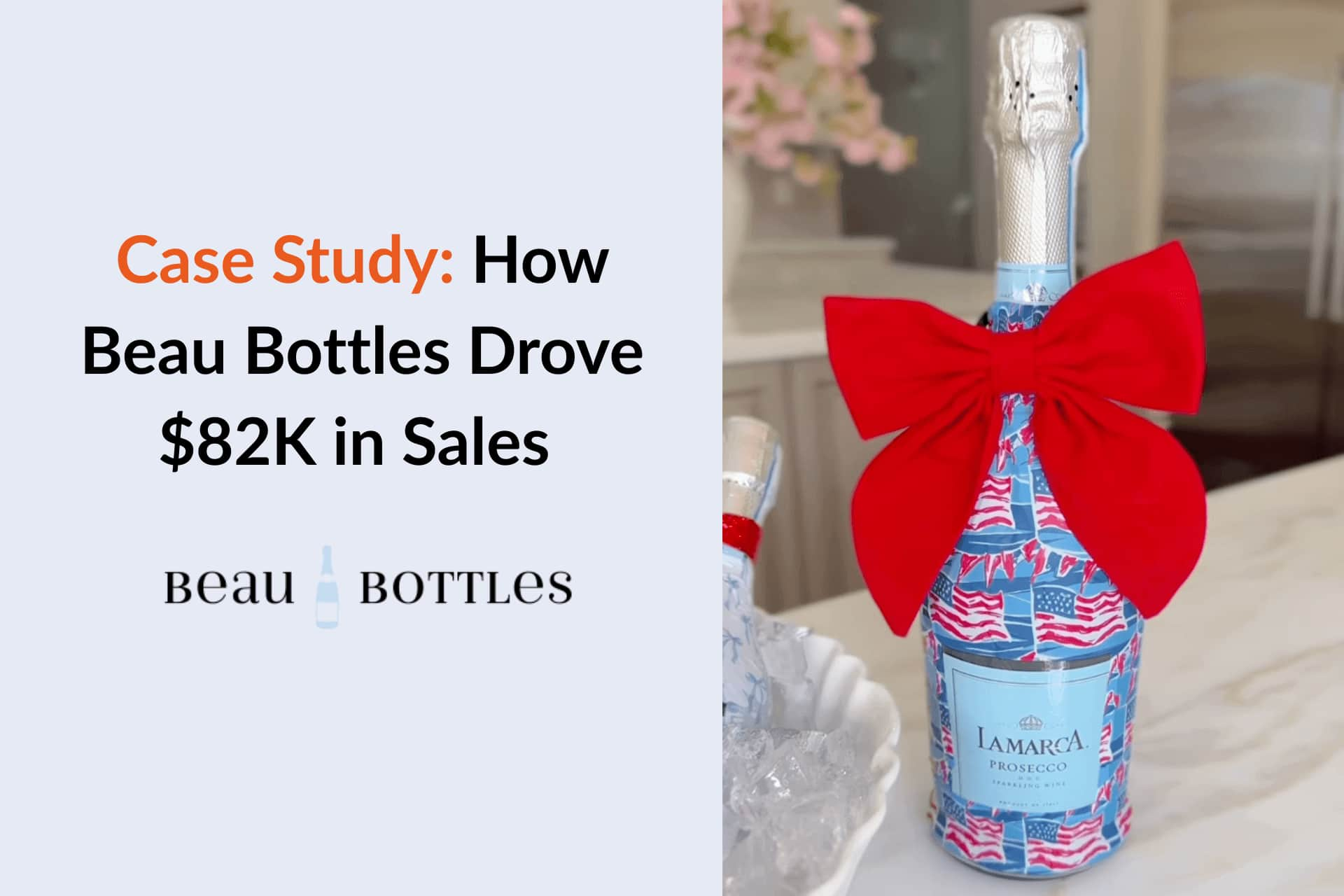





It’s an important step in influencer marketing to focus on the metrics, statistics, and analytics of the profiles you’re onboarding to your campaign to drive better ROI. However, there’s another crucial aspect that shouldn’t be overlooked: analyzing influencer profiles based on their content.
When working with influencers, you’re choosing representatives of your brand’s image online. Data has proven that authentic storytelling and a right fit between influencers and embodied brand values can lead to over 70% increase in conversion rates, and can also boost ROI by 25%.
Some marketers even find that content type and categories can be a main factor for working with influencers. It’s almost the leading criteria for evaluating partnerships, just 0.7% behind of Engagement and other metrics, like clicks.
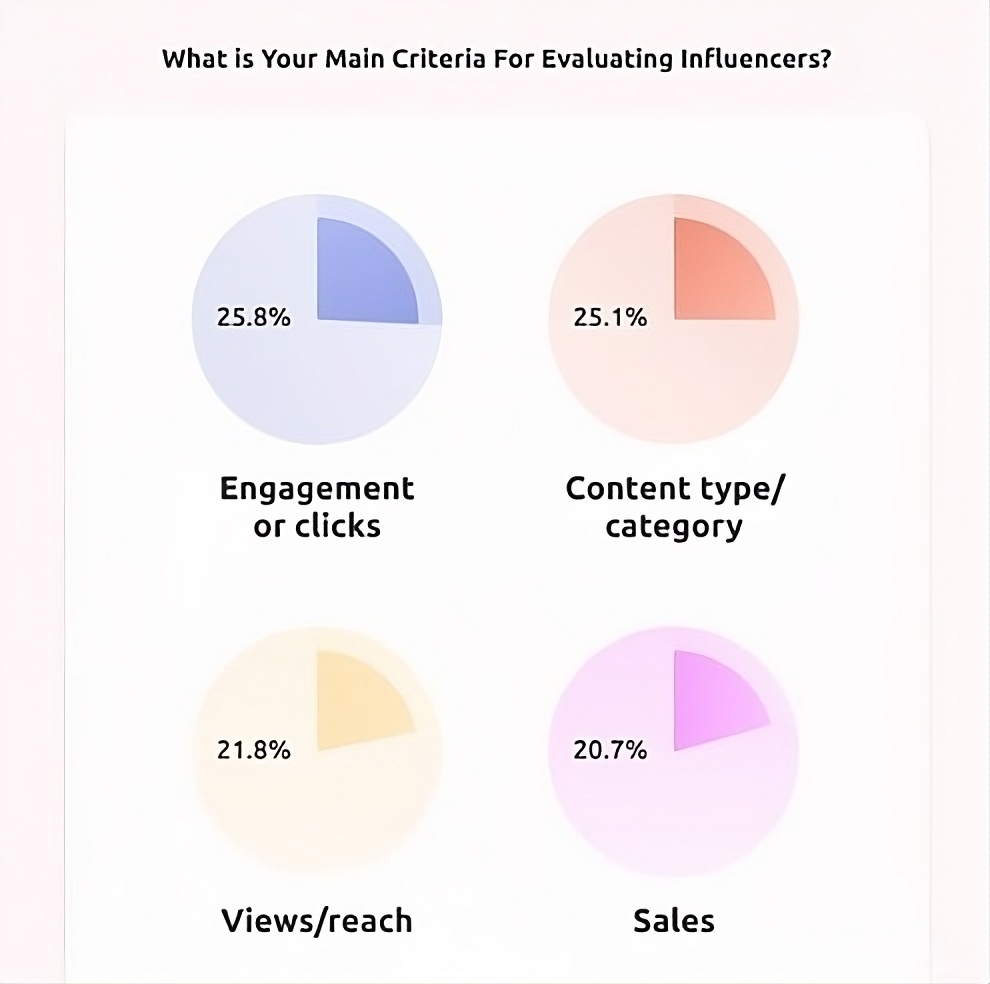
In this article, we’ll walk you through a step-by-step guide on how to analyze influencer profiles based on their aesthetics and content to determine whether they truly align with your brand, beyond just performance metrics.
An influencer is considered a brand fit when their content, values, and aesthetic align with the brand’s. When those similarities are present, the influencer feels like a natural extension of your brand, not just a random promoter. This increases authenticity, builds trust, and ultimately improves the ROI and overall impact of your campaign.
You can ask yourself: does the influencer’s profile visually resemble your brand’s imagery? Do they speak in a similar tone and use language that matches your brand’s voice (keeping in mind this can vary by niche and audience)? Do they believe in the same values your brand stands for? And finally, do their followers match your target audience?
And let’s not forget about checking their Brand Affinity and Brand Loyalty.
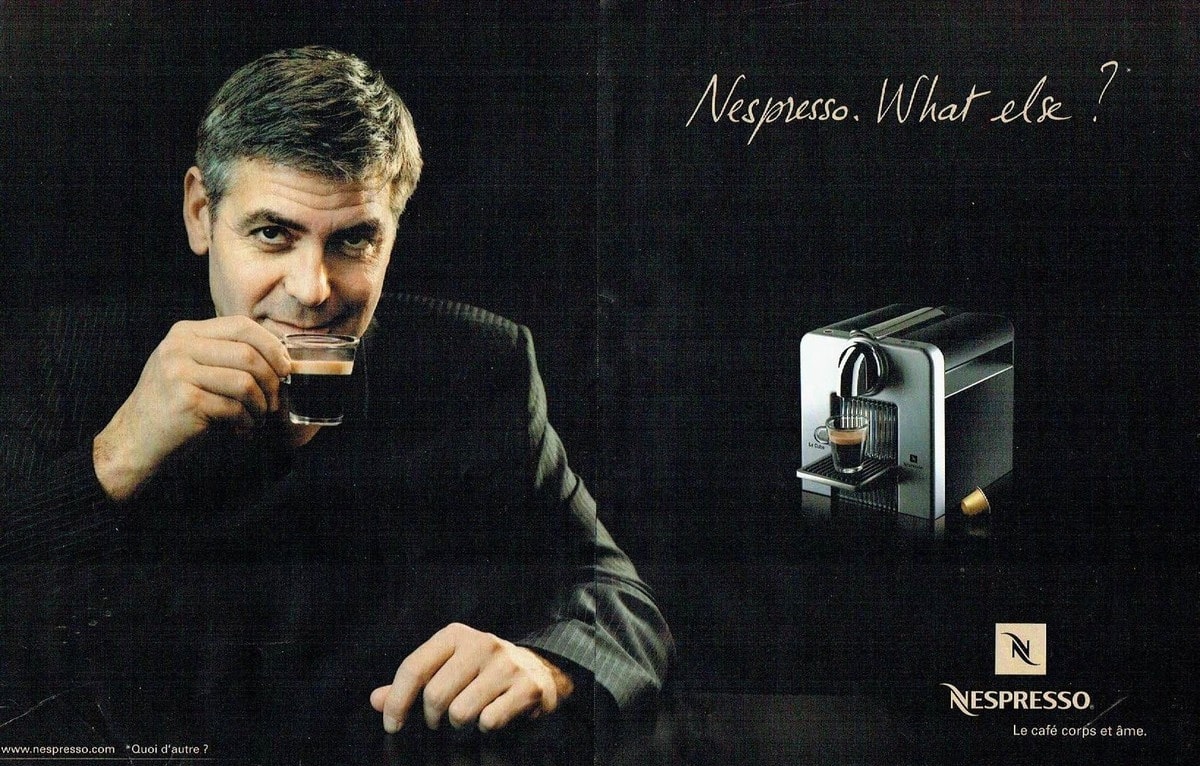
When evaluating influencer profiles, engagement rate is key, but it’s only one part of the picture. Here's a list of the most relevant metrics you can analyze to assess whether an influencer is a good fit for your campaign:
Engagement rate measures how actively followers interact with content. It’s the sum of all interactions possible in a platform: likes, comments, shares and more. This metric helps us determine how receptive and loyal the audience is to an influencer.
This also is very helpful to indicate how valuable the content is for the audience. Comments can give insights into audience sentiment, and shares or saves can show what content is found helpful to keep.
While benchmarks vary by follower count, a healthy rate often falls between 1.5–3% for micro-influencers, and over 1% for larger accounts. If you want to know more, here’s everything you need to know regarding Influencer Engagement.
Shows how quickly the account is growing. Consistent and organic growth (without spikes) indicates the following is genuine and aligns with periods when the influencer posted more content.
Spikes may indicate a controversy (if many followers unfollowed) or suggest that the influencer bought fake followers.
Of course, you should never stop checking for fake followers and genuine engagement in the influencer’s comments, likes and shares. Influencer Hero has a Free Checker and Scanner Tool for that as well.
Reach is the number of unique viewers that had the post appear on their main pages while scrolling. Impressions, on the other hand, is the number of total views that includes repeats.
This is helpful to analyze a single post or a series of posts to see the audience’s interest on a certain topic, format or style. Also, one of the main key points to estimate visibility and scale of impact of your campaign.
An influencer’s audience demographics incudes age, gender, location, language and more insights. This step is crucial for ensuring that the influencer’s followers match your target audience.
An important step is to review the influencer’s past collaborations to see if they’ve worked with similar brands or competitors. A good indicator is how well branded content performs compared to their organic posts.
This shows whether the audience is receptive to paid promotions and what type of brand/product they are more likely to engage with.
Content analysis is key to understanding how an influencer communicates, engages, and creates value for their audience. It helps brands assess whether the influencer’s style, consistency, and storytelling align with their goals and if their content can genuinely integrate branded messages.
When analyzing influencer categories, take into account the platform where you’re planning to launch your campaign, as some categories tend to be more popular on certain platforms and content formats. Influencers don’t always stick to a single category, but you can observe what predominantly appears on their profile. This also helps you assess whether the influencer aligns with your brand in terms of communication style and messaging.
An active profile should post daily or weekly to maintain a high engagement rate and show compromise with their community.
From a brands perspective, this is important to determine how your branded/sponsored content will impact the posting schedule of the community and how often can you foresee the influencer posting about you.
For that reason, we try integrating the brand with the influencer in the most natural way possible.
For posts descriptions, pay attention if they are clear when communicating or, in other branded posts, include clear call to actions and storytelling that integrate their usual content with the brand’s trajectory.
An important factor to determine the capacities the influencer has in creating content.
It’s immediately clear when analyzing a profile if the content feels authentic or too promotional. Brand fit improves when the influencer has the skill to integrate products or brands with their content in a natural and credible way.
As a way of anticipating the type of content that performs better with their audience, and which type of content your brand would be interested in the influencer making, take a look at the distribution of content between different formats.
Also, center around if visually the posts have a visual style or system and if that resonates with your brand’s style manual.
Understanding an influencer’s aesthetic and style helps determine if their visual identity and tone align with your brand. A strong aesthetic match ensures your product feels like a natural part of their content, boosting authenticity and campaign effectiveness.
Analyze if the profile has a consistent aesthetic. This is usually a good sign, meaning they take the time to curate an identity online that reflects their style and personality.
For example, pay attention to the use of consistent colors, filters, edit style or if there’s a visual theme present. For brands, working with influencers that have an organized feed means that they are professional and they have a strong identity online.
As a parallel, after analyzing the influencer’s profile, analyze your brand’s manual or your brand’s social media profiles and compare. Think about your brand and product as if you were to create a post on the influencer’s account. Would it seem like a natural fit or a complete mismatch?
By reading captions you can “hear” how the influencer communicates and what tone they use to create a dialogue with their communities: fun, elegant, relaxed, intimate, aspirational, and more.
This factor is especially important because, if they create a story or reel with the products, the success of their posts will depend on the tone used for writing the call-to-action and the information about the benefits of your products.
A mismatch can definitely worsen your curated image as a brand, and not deliver the desired results.
To make it clearer, everything is based on the visual impression the profile causes. Let’s suppose we’re Nivea, and we’re choosing influencers for our next influencer campaign. These are two influencers that are presented as an option, because both have good analytics and reputation.
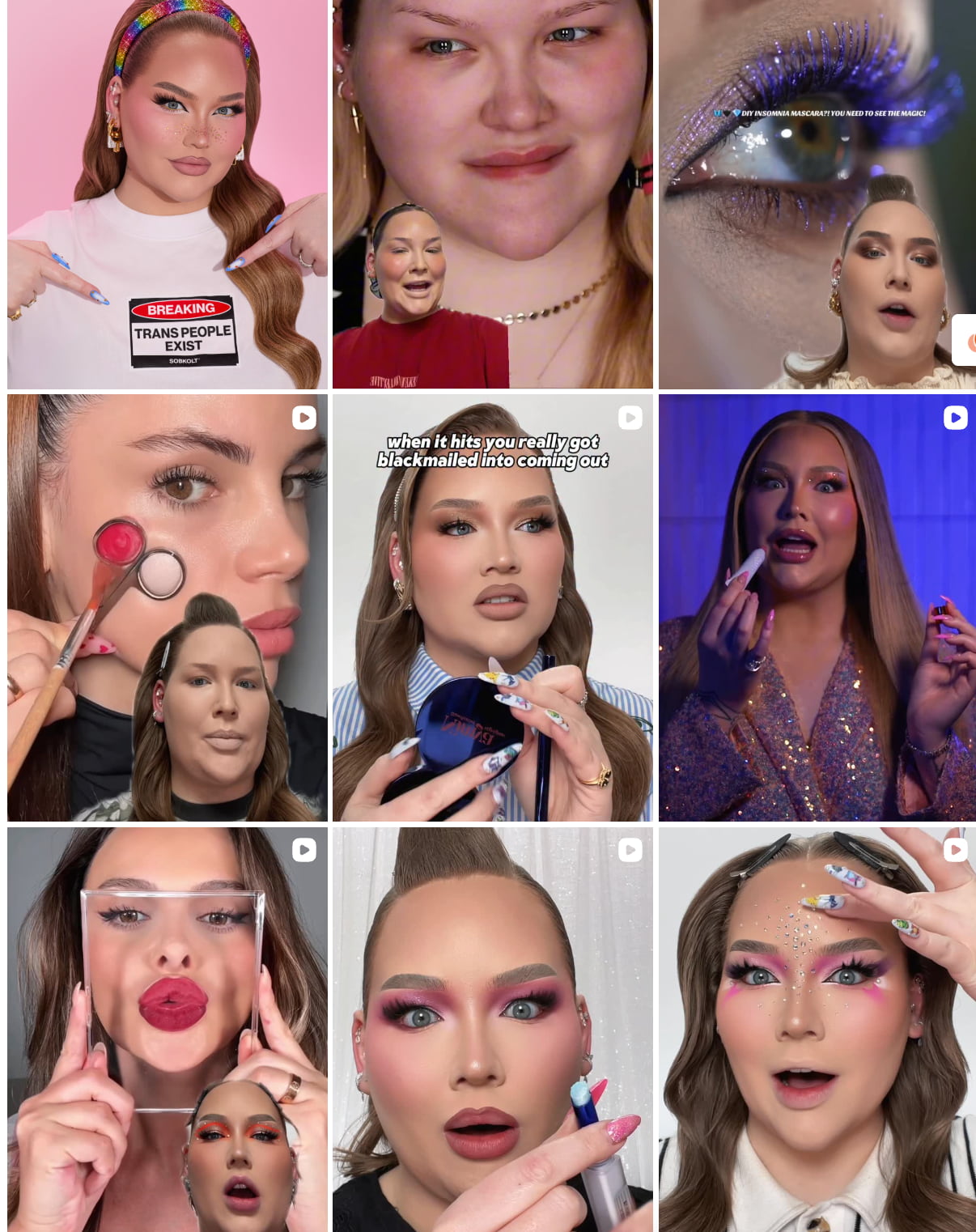
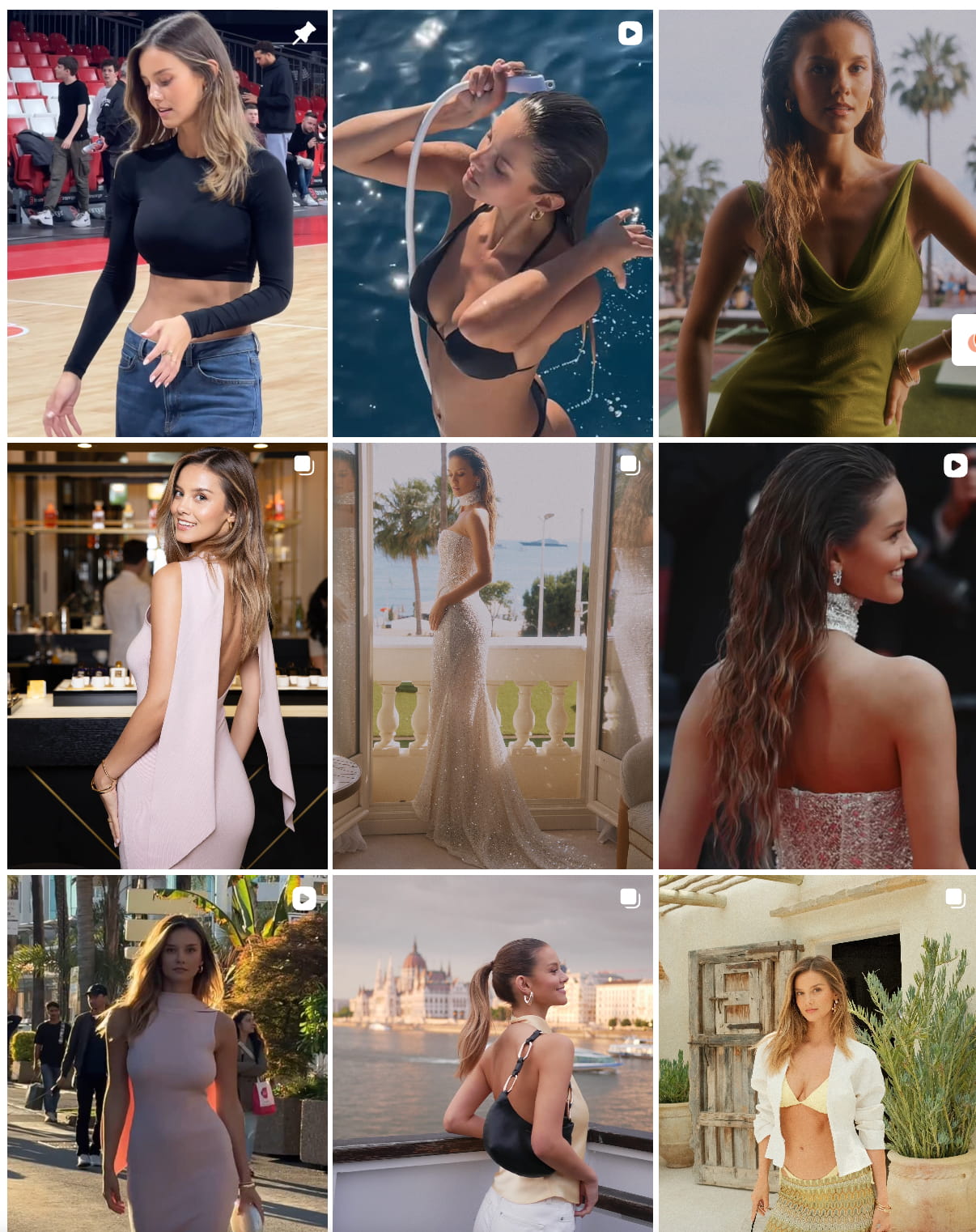
Her content is high-quality, clean and with soft natural light that emphasizes her glowing skin. Her tone is something that exudes natural and approachable elegance, matching with Nivea’s emphasis on simplicity, purity and natural glow.
It’s also important that she is comfortable with showing some skin and elegant cuts online, which is something the brand would need as a requirement if they need to show the products in action.
To confirm our analysis, she has previously collaborated with Nivea in a commercial for the brand in February of 2021.
Nikkie comes from Youtube, so she uses bold and vibrant colors like pink to attract attention. Her vibrant and bold style also appears on her makeup looks, which are dense and usually require a high-coverage foundation, which contrasts with Nivea’s preference for a natural and everyday beauty.
She also presents herself with a dynamic and fast-paced tone, completely different from Nivea’s calm and soothing brand voice.
Finally, when thinking about the target audience for Nikkie’s tutorials, we can assume people follow her for her makeup artistry rather than for skincare solutions. This is something we’ll talk about in the next section.
It is known that when choosing influencers we need to back up ourselves with analytics to systematize and simplify the decision making process. We’ve previously talked about how to optimally read audience demographics like a pro, but here we’ll get more in-depth in other aspects of audience reach, beyond audience metrics.
Studies online have shown that, when at least 9% of an influencer’s audience have similar interests with the brand’s ideals and niche, ROI is maximized and is on the most optimal follower-to-brand fit. A decrease in this percentage can deviate ROI by up to 7.9%.
Apart from follower demographics, you can analyze the audience interests and the alignment with your product. Think about the influencer niche and why people are attracted to their content. You can contrast with what your product offers and what necessity satisfies, and if there’s already a match.
Ideally, there should be a match in three aspects: the audience’s interest is in the same category as your brand, the audience follows or have purchased from similar brands, and the influencer’s audience helps you reach any of your brand’s objectives. It doesn’t always have to be about conversions, but they can help you improve your brand’s awareness of a specific niche.
Some tools like Influencer Hero can help you determine if an Influencer’s audience is interested in your niche and in similar brands.
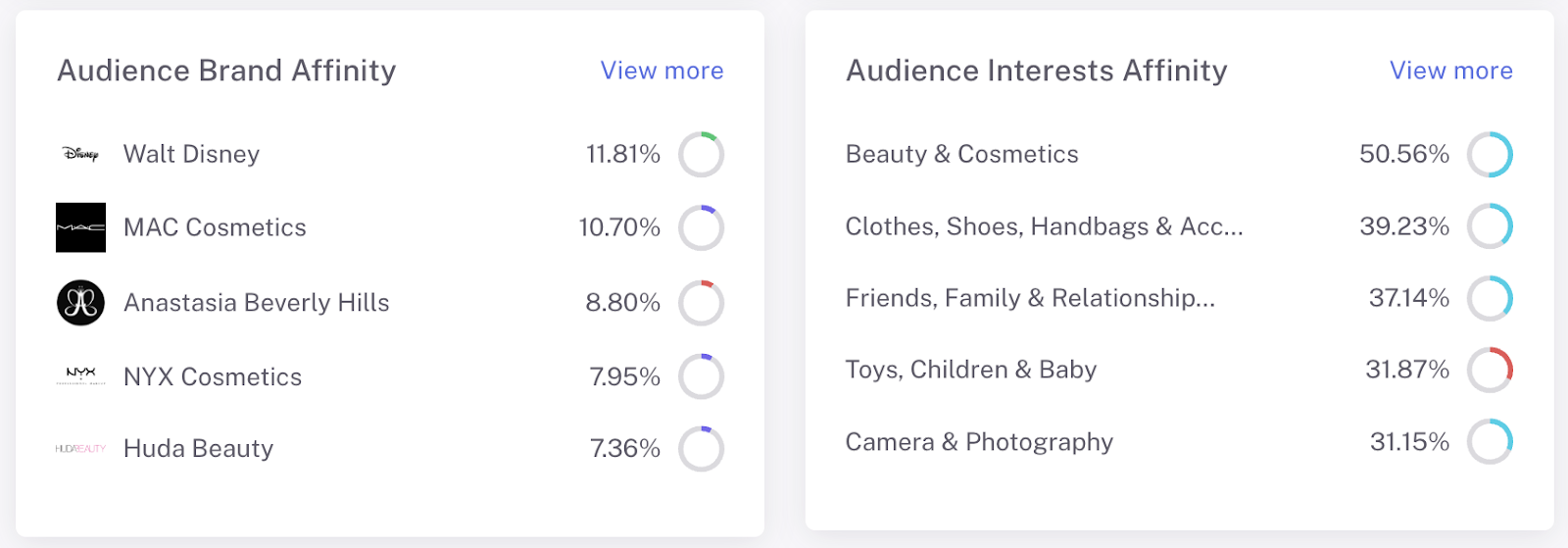
HypeAuditor is an AI-powered influencer marketing platform designed to help brands and marketers find authentic influencers and analyze their profiles. It’s widely used for vetting influencers to ensure genuine engagement and audience quality.
Key features include detailed audience quality scores, fake follower detection, engagement rate analysis, and market comparison tools. HypeAuditor provides fraud detection and benchmarking tools across multiple social platforms.
Heepsy is a user-friendly influencer search and analytics tool that helps brands discover influencers based on niche, location, and engagement metrics. It is commonly used for influencer vetting and campaign planning.
Heepsy offers filters for audience demographics, engagement rates, follower authenticity, and content types. Its standout features include the ability to sort influencers by category and access to real-time follower growth statistics.
Noxinfluencer is an analytics platform focused on YouTube and Instagram influencers, providing comprehensive profile insights and performance tracking. Brands use it to evaluate influencer reach and engagement for effective campaign decisions.
Highlights of Noxinfluencer include real-time follower and subscriber analysis, estimated earnings, audience demographics, and competitive benchmarking, especially tailored for video content creators.
Access to your dashboard to start the analysis. You can do it by accessing our front page and clickin on the up right button “Sign In”. If you don’t have an account yet, contact our team and we’ll create an account and guide you through our platform.
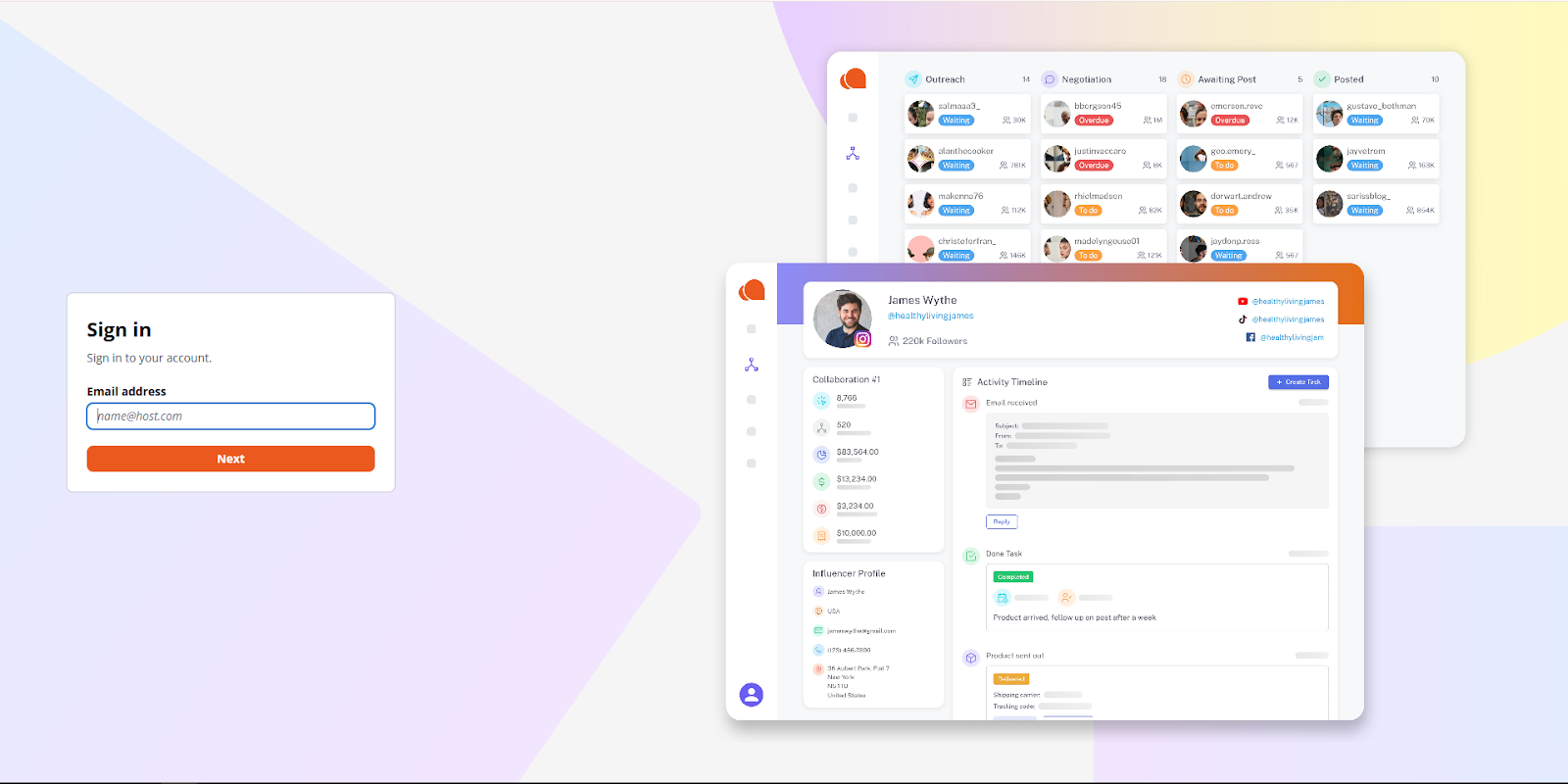
On the left menu, you’ll have the option to navigate to our Influencer Finder. Once you click on it, you’ll be able to write a prompt for finding influencers with AI, if you’re looking for something specific, or just select the platform and filters to get the best possible results. Some examples are the lookalike filter, if you’ve worked with an influencer you really like on the past and are looking for similar influencers, the gender, age, engagement rate and more. You can define filters not only for the influencer stats, but also for their audience.
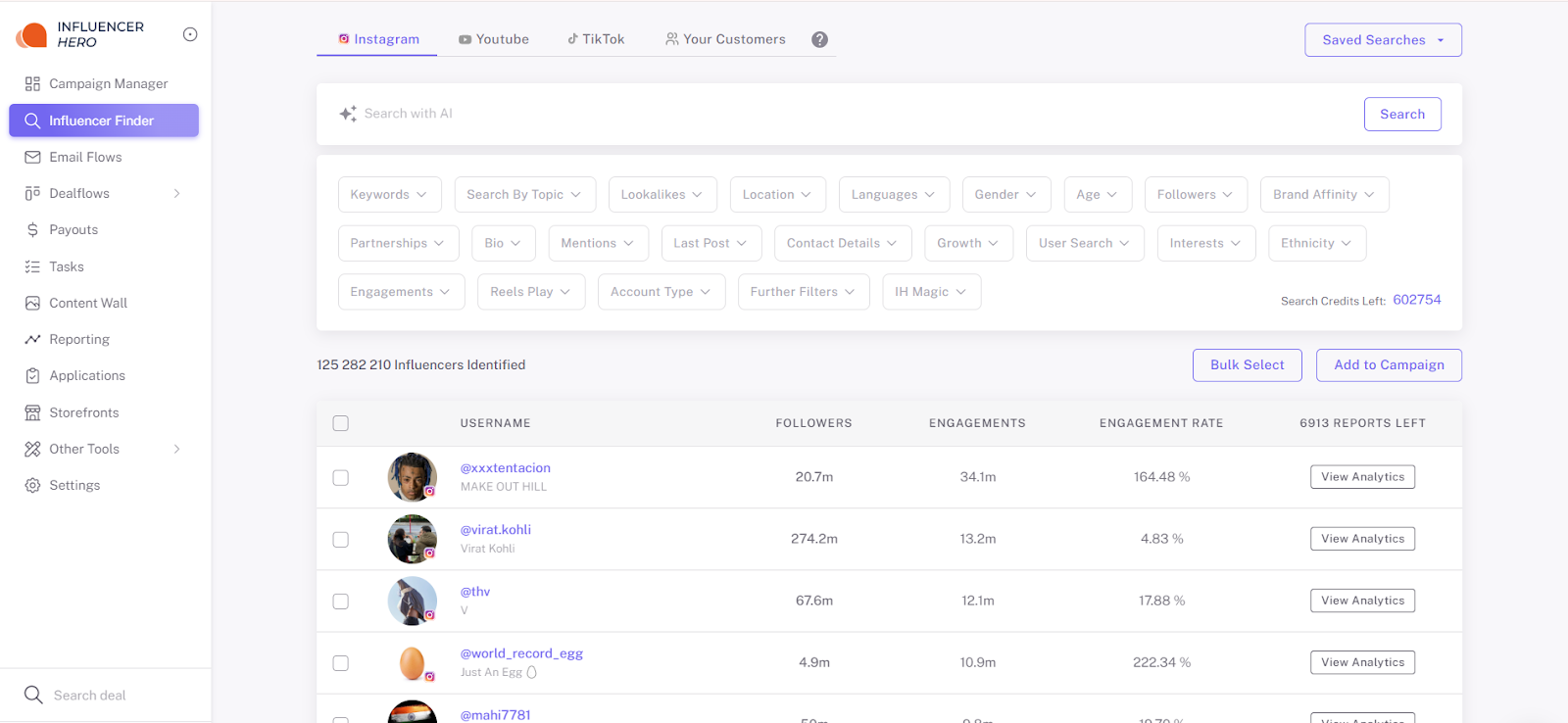
As you’ve seen, along with the influencer’s name and handle Influencer Hero provides analytics for each influencer that appears after every search. By clicking on the “View analytics” button at the right of their profile card, you’ll be able to access all metrics.
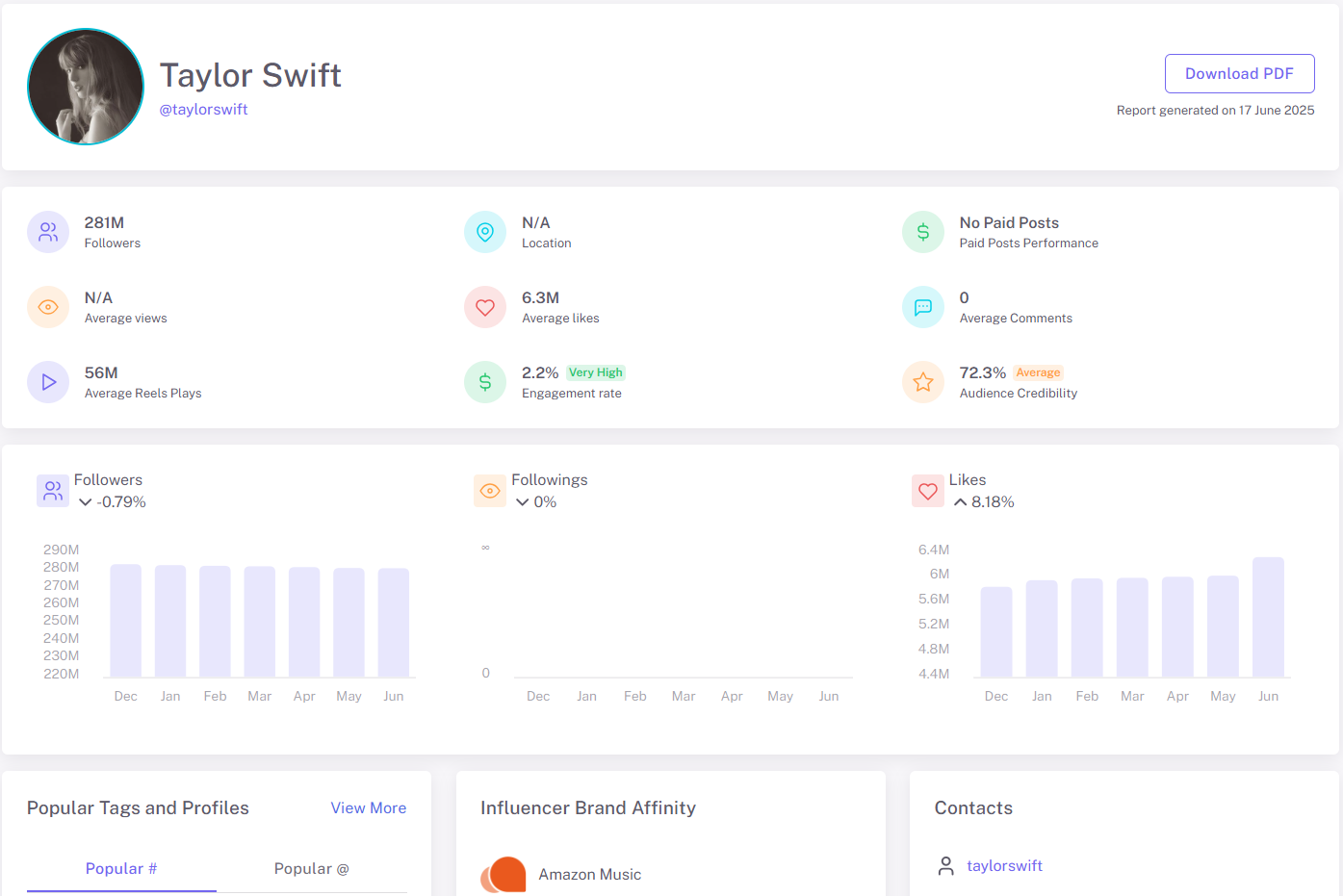
The main stats you’ll be able to see are location, paid posts performance (if there is one available), engagement rate (and we’ll specify if it’s a good, average or bad) and audience credibility percentage. Below, we have even more insights about brand affinity, contacts and popular tags and hashtags used in their posts.
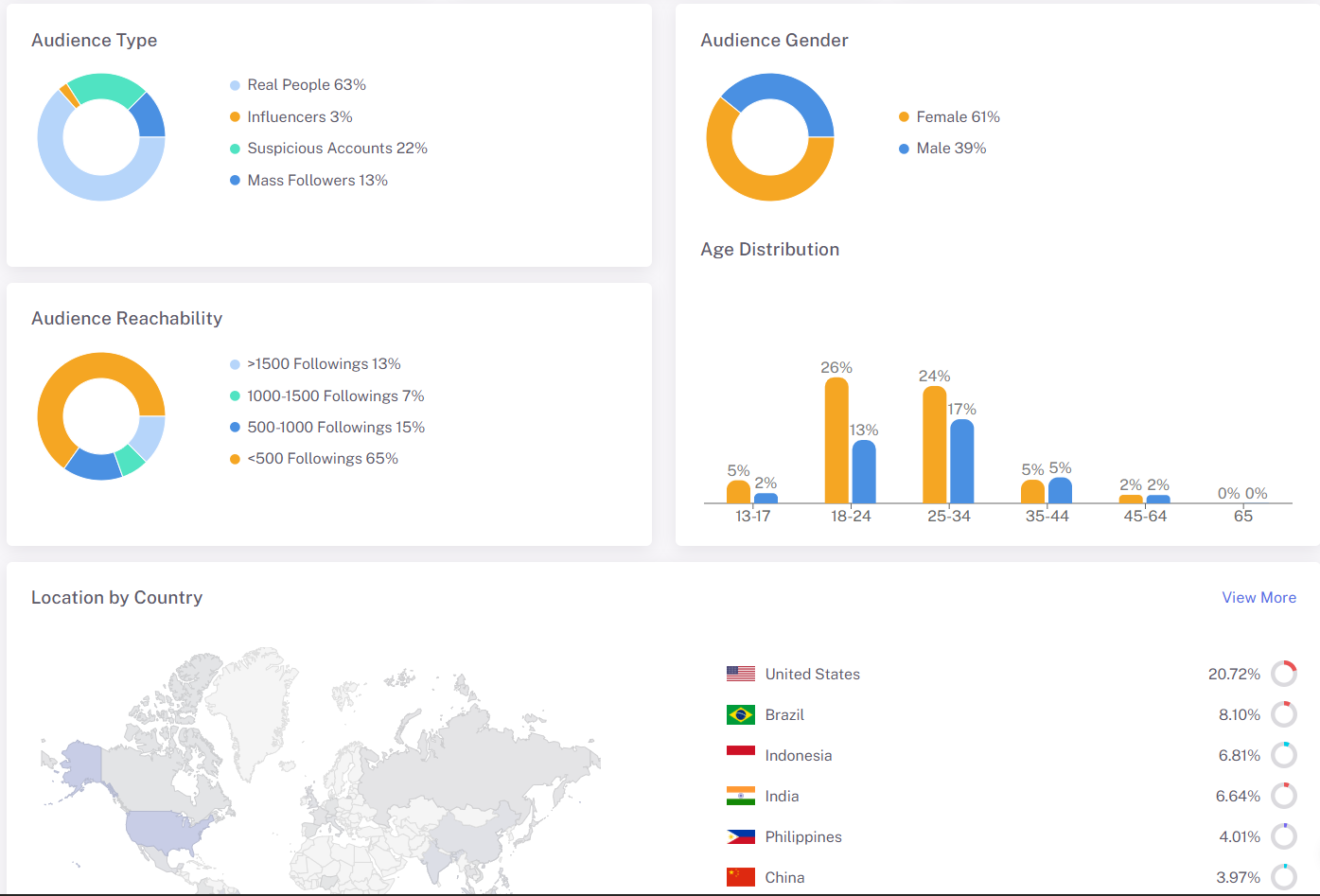
Scrolling down, we encounter more audience metrics. This is just a snippet, but as explained above, we do have audience affinity, audience interest and more engaging posts below this page. On here, you’ll be able to dissect the audience type to determine audience credibility, gender, age distribution and location by country. We also determine location by city.
Now, if their analytics are good, we recommend opening their social media profiles and analyzing their recent content, communication style, recent pictures and more to determine if they’re a brand fit. On this step, we’ll be applying everything we learned thus far on this article. Do they use a color palette similar to our brand? Do they promote similar values?
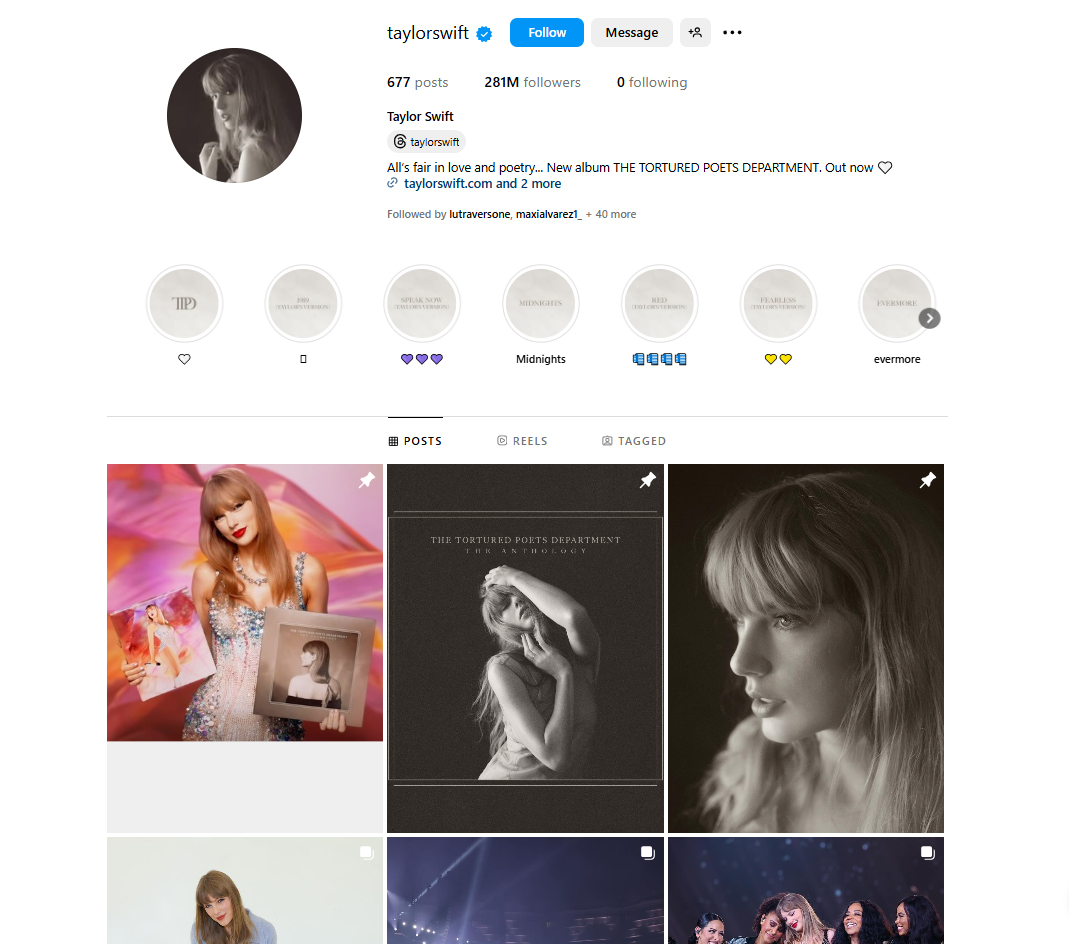
If they look like a fit for your brand and product, you’d continue by searching for previous collaborations to ensure they’re definitely a brand fit, that they promote similar products and to see how the audience has previously responded to promotional content. If the results don’t interfere with your brand or product, then we can onboard them for our campaign.
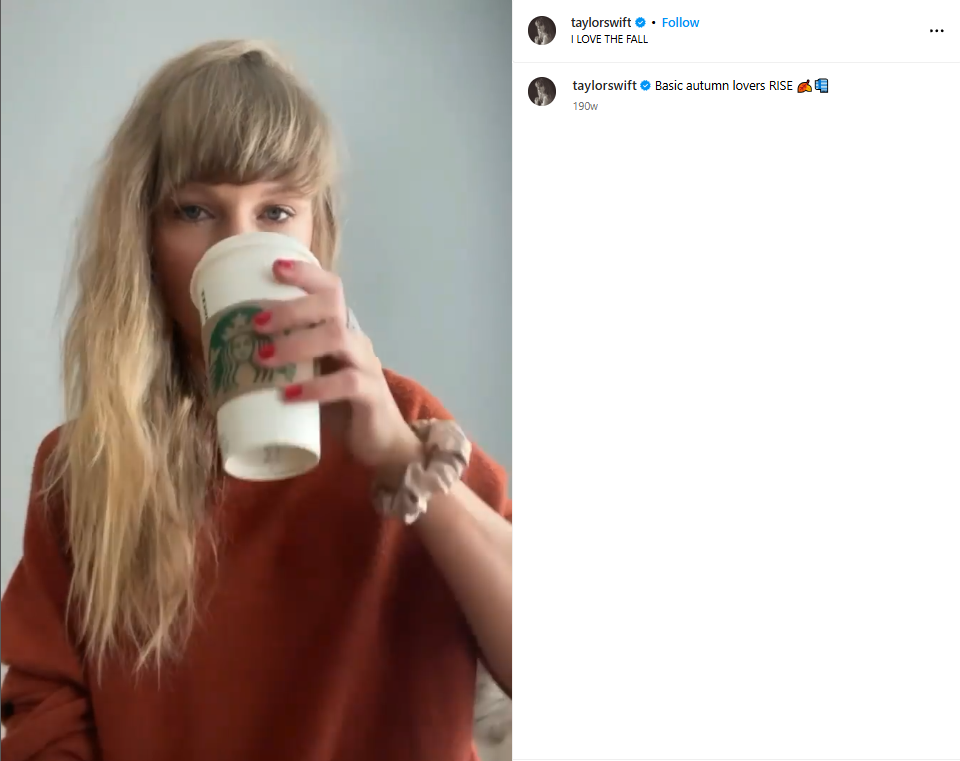
If the results don’t interfere with your brand or product, then we can onboard them for our campaign. For this, there’s many different ways to do this with Influencer Hero. Because we’re in the influencer finder, we can directly click the checkbox on the left of their profile picture and select “Add to campaign” to start reaching out to the influencers with our curated proposal.
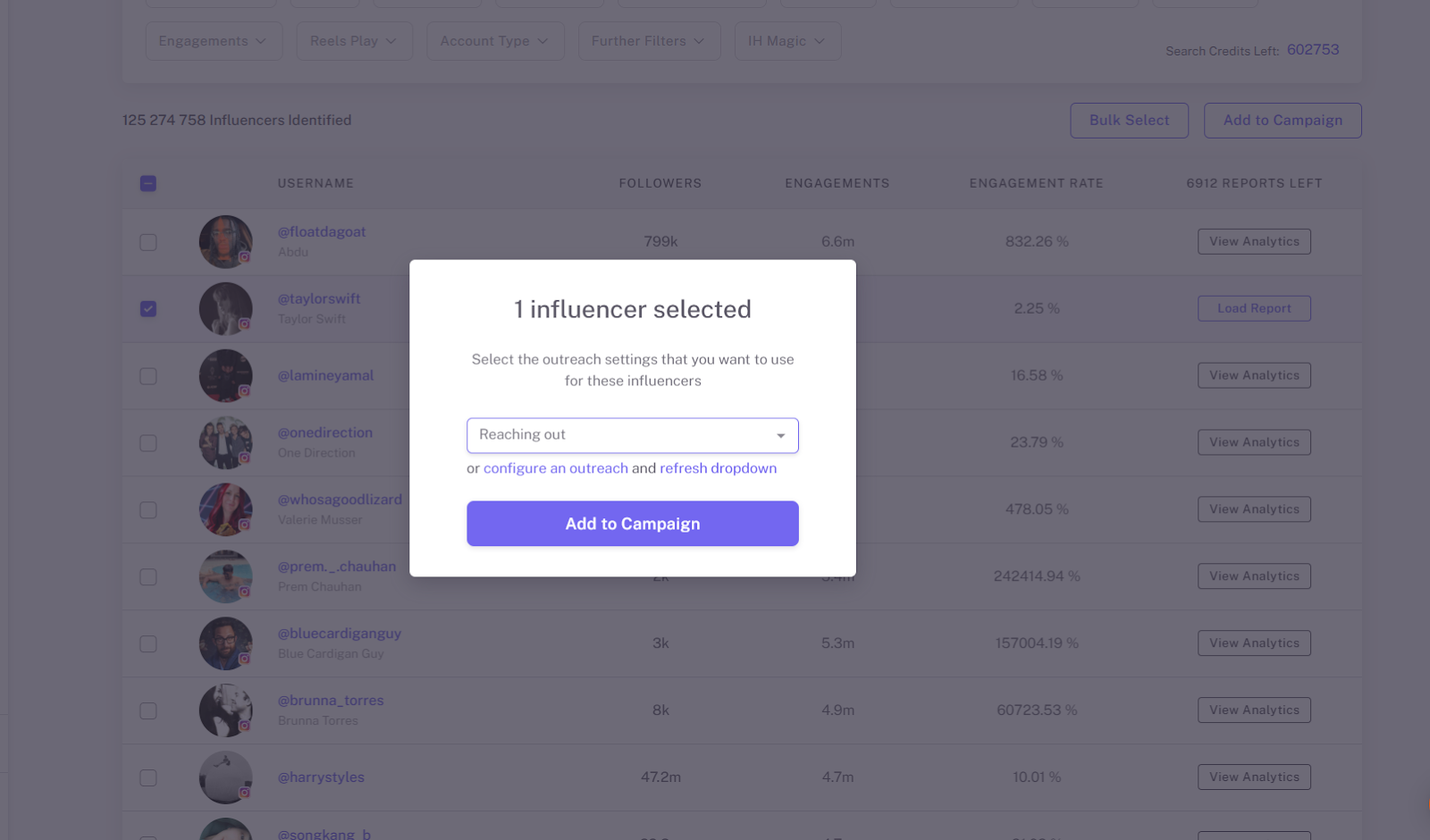
By reviewing the influencer’s past partnerships you can also check if they’ve worked with a competitor or other brands you don’t want to be related to.
Focus on finding good quality and reliable brands in their past, along with what type of product they’ve agreed to promote to ensure the influencer also prioritizes long-term relationships, trust and professionalism.
Look for core values in their content and see if they’re known for reflecting sustainability, diversity, inclusivity or transparency. You can also try to uncover some causes they’ve previously participated in, supported and the messages they share on social media related to more political or serious matters.
The importance of this is to find an influencer that embodies your brand’s values and respects similar causes your brand aims to tackle.
We recommend never partnering with an influencer that involves too much in politics or in critical aspects, unless your brand is really involved in those topics. Take into account that you’re connecting your brand to everything this influencer does online, which can be damaging if they reflect different values.
A really important step is to google the influencer (especially if they’re well-known) to uncover if they’ve either a positive or a negative overall presence online. You can look for news mentions, online articles or controversies. Again, these aspects may also damage your brand’s reputation.
Here are some final green flags you can consider as a checklist before shortlisting an influencer for your marketing campaign:
Brands that care about their online presence should also care deeply about the influencers they partner with. In influencer marketing, the focus often lies heavily on metrics and analytics for decision-making. But taking the time to find influencers who are a strong brand fit is just as important and can lead to better ROI.
The quality of the content and the influencer’s history will always be key factors that impact a campaign’s performance. That’s why we encourage you to combine data with deeper profile analysis… and trust your gut. You know your brand better than anyone.
Start analyzing your next influencer partner with confidence!

Because performance metrics alone don’t reflect how well an influencer aligns with your brand’s values, tone, and audience. Content analysis ensures that your brand will feel like a natural fit in their feed, improving authenticity, trust, and campaign results.
Look for visual consistency, such as cohesive colors, filters, and feed layout. Also check whether their tone of voice, imagery, and overall style reflect your brand’s identity and message.
Red flags include sudden spikes in followers, a low engagement rate despite a high following, repetitive or bot-like comments, and inconsistent posting habits. Always use tools to double-check audience authenticity.
A good brand fit means the influencer’s content, values, tone, and audience closely match your brand. Their posts should feel like an organic part of your message, not a forced sponsorship.
Check demographic data (age, gender, location), but also go further: look at follower interests, engagement behavior, and brand affinity. Tools like Influencer Hero can help you dig deeper into audience alignment.



Schedule a Demo with one of our media experts below.